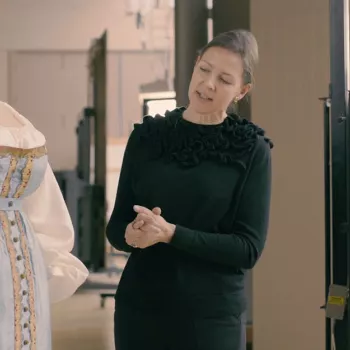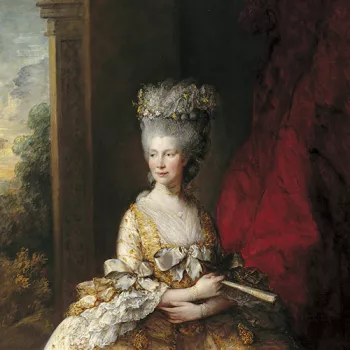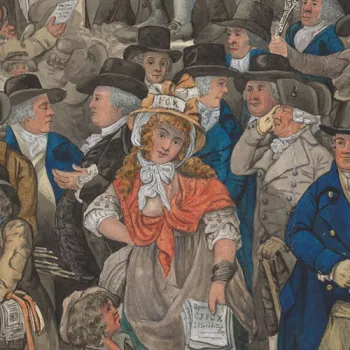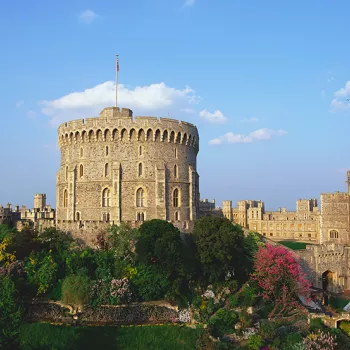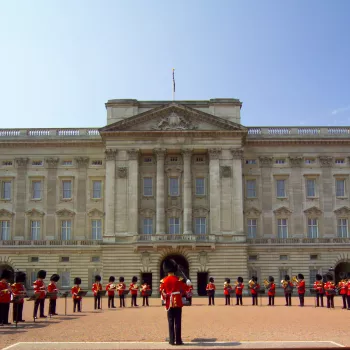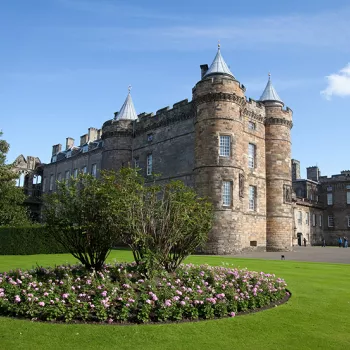
Princess Charlotte’s Wedding Dress
A story of marriage, survival, and loss.
Reading time: 3 minutes
Princess Charlotte was the only child of George IV and his wife, Caroline of Brunswick, and a granddaughter of George III. She also held the position of heir presumptive to the British throne. Charlotte's wedding dress was a masterpiece of Georgian-era fashion and remains one of the most iconic bridal gowns in history.
The magnificent dress was worn by Princess Charlotte on her marriage to Prince Leopold of Saxe-Coburg-Saalfeld on 2 May 1816. It is the only royal wedding dress that survives from the Georgian period.
A silver wedding
Their wedding took place in the Crimson Drawing Room at Carlton House in London. The private evening ceremony was witnessed by only a small number of guests.
The practice of wearing a white wedding dress did not become established until the end of the 18th century. Most women instead chose to wear their best clothes, regardless of colour. Royal brides across Europe however tended to wear silver. This was an established custom within European royal families.
The wedding gown is silver like those worn by her mother and grandmother. It retains some of the same features of a traditional robe de cour (also known as a grand habit), with layered sleeves and a train. However, the waistline and silhouette are more like neo-classical gowns of c.1816. The raised waistline sits just below the bust and the silhouette is narrower. Another key difference from earlier gowns is that the bodice is not stiffened. Instead, it would have been worn with a corset beneath.
The dazzling, reflective appearance of the dress is created through the extensive use of silver lama. This specialist type of embroidery was produced by binding strips of silver or gold ‘thread’ (lama) onto a net ground.
The dress was described at the time as being of
silver lama on net, over a silver tissue slip, embroidered at the bottom with silver lama in shells and flowers
The Princess’s fair hair was simply arranged and crowned with a ‘wreath of brilliants’ in the form of rosebuds, as well as a ‘diamond hairpin, ear-rings and an armlet of great value.’
Original or alteration?
A close examination of the dress reveals that it has been significantly altered from its original form. An engraving reproduced in the fashionable magazine La Belle Assemblée a month after the wedding reflects the appearance of the dress at that time.
The shell-ornamented borders of the sleeves appear to be original, as they are described in the Princess’s wedding trousseau. Trousseau refers to the personal possessions that a bride brought to her marriage. However, it is likely that these were then later combined with a different court gown, almost certainly another example from Princess Charlotte’s wardrobe.
During this period textiles were incredibly labour intensive to produce, and therefore extremely costly to buy. Remodelling clothes was not unusual, even amongst the wealthy. Clothing was constantly being recycled and repurposed. This explains why so few pieces remain in their original state. The precious metal thread used in this dress would have been particularly expensive.
A tragic loss
The fact that this dress survives at all owes much to the tragic events which unfolded shortly after Princess Charlotte’s marriage. In 1817, the Princess died in childbirth. She was only 21 years old.
Her sudden death sparked a very public succession crisis for the British monarchy. She was the only legitimate grandchild of George III at the time.
A devastated Prince Leopold retreated to Claremont House where his wife’s clothes took on a new significance. Claremont House in Surrey, England was a wedding present to the couple, and it is here that they had spent much of their short time together.
Leopold and others actively worked to preserve and protect his wife’s clothing. As a result, more items from her wardrobe survive intact than can be said for any other members of her family at this time.





